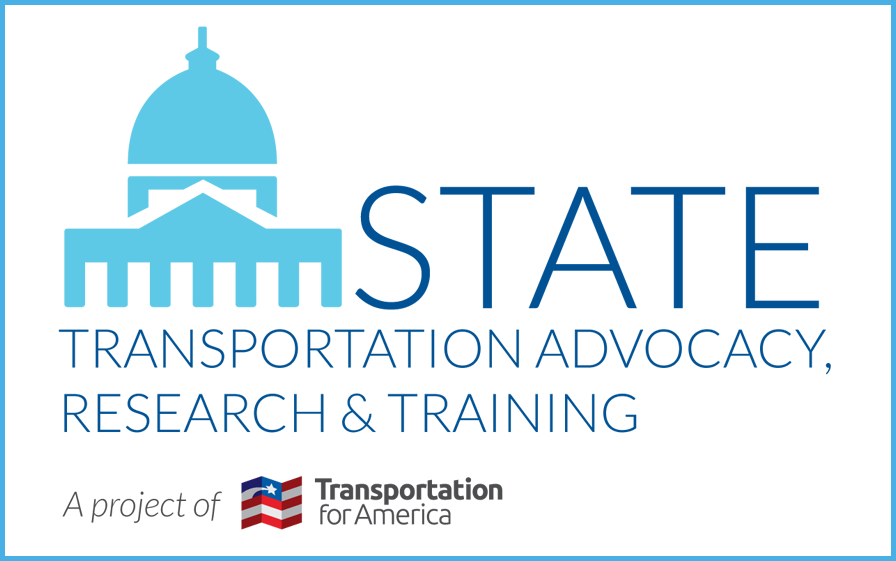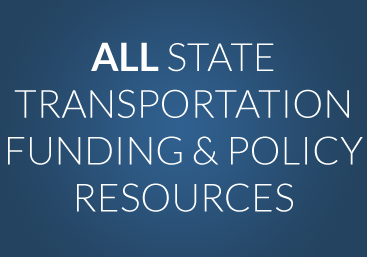Browse the report
POLICY GOALS
- I: Increase accountability and transparency to build taxpayer confidence
- II: Make states economically competitive; empower locals to do the same
- III: Invest in innovation and reward the smartest projects
- IV: Maximize savings through better project development
- V: Improve safety through better street design
Download the full report (pdf)
Join the START Network
T4America supports efforts to produce and pass state legislation to increase transportation funding, advance innovation and policy reform, empower local leaders and ensure accountability and transparency. Join the network.
State policy & funding home
Click here to visit our central hub for all state policy and funding resources, including our work tracking proposals in states to raise new transportation funding or reform the policies governing those funds to improve how those dollars are spent.
Stay informed
Sign up to receive news and updates from T4America. All fields are required.
Goal IV: Maximize savings through better project development
Overview
Too many resources are wasted on overbuilt and costly road projects, due to faulty projections, reliance on outdated measures (like level of service), limited evaluation of past decisions and political interference. States can save money by examining the process of project development to ensure that projects bring the greatest possible benefits for the lowest possible costs. Whether state revenues increase or not, more state leaders are recognizing that they must maximize the investment from each and every dollar.
Proposal #10: Right-Size Projects Through Practical Design
In response to a proposed project list that represented nine times the amount of funding available, Tennessee used administrative authority to audit its transportation program, remove projects no longer needed, and right-size many projects that remained. Right-sizing means that transportation projects are tailored to maximize return on investment — the lowest cost with the greatest possible benefit — while not compromising important factors such as safety, and being sensitive to the community that the road traverses.
In 2012, the Tennessee DOT (TDOT), in partnership with Smart Growth America, found that many transportation projects in its program could be redesigned to achieve 80-90 percent of benefits for as little as one-tenth of the initial proposed cost. After reviewing just the first five projects, TDOT found a cost savings of over $171 million through right-sizing the scope of work. In one project in Jackson County, TDOT was able to reduce the overall cost from an estimated $65 million to just $340,000 while still achieving the same safety and efficiency outcomes. As a result, TDOT has saved billions of dollars and stretched its limited resources even further (the state’s 21.4 cent per gallon gas tax was last raised in 1993, and the state operates its transportation program on a pay-as-you-go basis).
As part of its transportation funding package that passed the legislature in 2015 (SB 5987), Washington enshrined the practice of practical design into the Washington Department of Transportation’s (WSDOT) modus operandi. Similar to right-sizing, practical design focuses on squeezing the greatest benefit from each dollar invested for the entire system and not just the project, while also working with stakeholders to ensure the project suits their needs.
SB 5987 increases Washington’s gas tax by 11.9 cents per gallon over two years and increases other transportation fees. The bill also encourages WSDOT to be innovative in its project delivery by incentivizing practical design. Any and all savings accounted for by use of practical design and other innovative project delivery processes will be transferred to an account that will be accessible to the DOT starting in 2024 to use on preservation projects, to speed up existing projects or on new projects. This approach to better design holds WSDOT accountable for each dollar spent through better reporting and accounting practices while also incentivizing the widespread adoption of practical design; and the use of applicable savings for important future projects.







